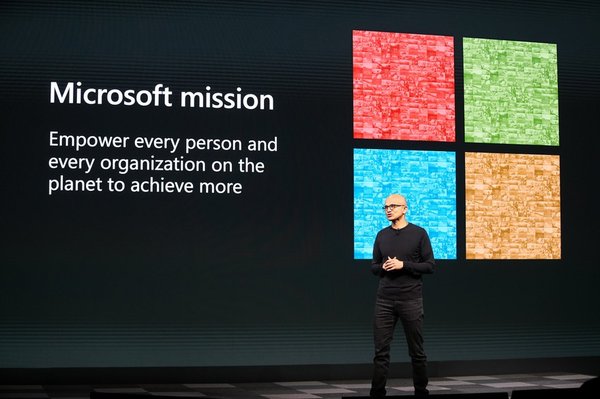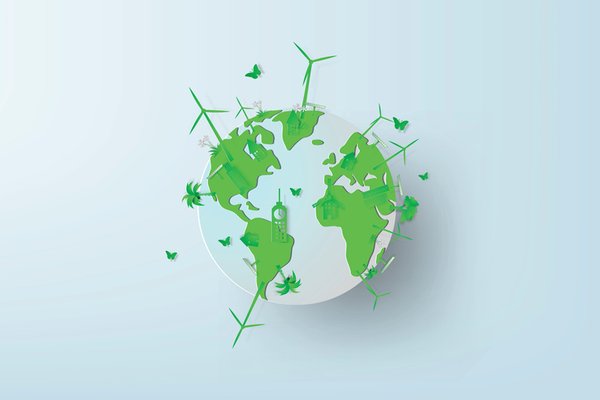Interest in environmentally sustainable investments, social issues, and governance is on the rise. Doing good can also be a wise long-term investment strategy. Last year, ESG mutual funds and ETFs rose by 53% to $2.7 trillion. ESG (environmental, social, governance) has become a buzzword in investment circles for good reason. ESG ETF investing has become about more than caring for people and the planet; it’s also become good business.
The Standard & Poor’s 500 ESG Index has outperformed the broader S&P 500 for the past 10 years. For more than 20 years, companies with high ESG values have shown consistent resilience and growth. During the 2018 and 2020 market contractions, companies with strong ESG track records showed greater ability to bounce back.

Understanding ESG ETFs
Understanding ESG ETFs
ETFs
Exchange-traded funds, or ETFs, are collections of stocks and bonds. Investors can purchase shares of an ETF, which invest according to specific objectives. ETFs are similar to mutual funds in that they’re a group of stocks and bonds. Investors can buy shares of either mutual funds or ETFs, but ETFs differ from mutual funds in two key ways.
First, ETFs can be bought or sold throughout the trading day. They trade like stocks on major exchanges. Mutual funds can only be bought or sold once per day.
The second key difference is pricing. ETF prices fluctuate throughout the day as they are bought and sold. Mutual funds are priced once daily on their net asset value.
ETFs can be either passive or active. Passive or indexed ETFs track a stock index such as the S&P 500. Active ETFs are actively managed with the goal of outperforming average index performance.
ETFs generally charge fees. This fee is listed as an annual percentage and is called an expense ratio. A lower expense ratio means more money to invest. Most ETFs pay dividends. Investors can have the dividends paid as cash, or they can be automatically reinvested.
ESG
ESG is a broad term for companies choosing to demonstrate a commitment to protecting the environment, social responsibility, and/or transparent governance. Companies may choose to focus on one of these areas or all three. Another term for ESG is sustainable investing or green investing.
Here is what each area of ESG covers:
- Environmental: Companies demonstrate concern for the environment when they choose to reduce their total carbon footprint, use sustainable energy, work in LEED-certified buildings, reduce waste, develop clean tech, and/or give back to environmental causes.
- Social: Social responsibility occurs when a company commits to paying living wages, accepting product liability, protecting data, and providing a healthy and safe work environment.
- Governance: Governance encompasses transparent company ownership and control, diversity, board independence, financial transparency, and ethics.
ESG ratings
ESG ratings can provide insight into a company’s long-term performance. ESG risks, such as unsafe working conditions, lack of board independence, energy dependence, or questionable accounting practices can have serious financial consequences.
Companies that have demonstrated a commitment to the environment have consistently performed better than competitors. Choosing a company with a high ESG rating can make good long-term financial sense.
ESG ratings measure a company’s long-term environment, social, and governance risks. The higher the ESG rating, the lower the total risk. One of the most widely used ESG rating systems is the MSCI USA. The system measures risk across industry-specific issues, which are weighted by potential impact. The industry-specific scores and weighted scores are combined to give each company a score between 0 and 10 and are then converted into letter grades from CCC to AAA.
Companies with ESG scores of AA to AAA are considered ESG leaders with lowest ESG risk. Average ESG scores range from BB to A. A company with a high ESG score demonstrates strong commitment to ESG. This can also translate to lower risk for investors. Investors can use the ESG score for supplemental financial analysis. For investors committed to environment, social, and governance values, a high ESG score can also be a filter for selecting investments.
Keep in mind that an average ESG rating may not indicate a commitment to social responsibility or environmental issues. Companies can score at average levels with good corporate governance, strong data privacy, and transparent accounting.
For example, many are making the argument that Amazon (AMZN 3.43%) is not a true ESG stock. Amazon rates highly in corporate governance and data security but has an average carbon footprint and scores poorly on labor management. It is rated as BBB under the MSCI ESG ratings and is found in many ETF ESG portfolios without demonstrating a commitment to the environmental or social aspects of ESG.
6 Top ESG ETFs in 2024
6 Top ESG ETFs in 2024
| ESG ETF | Market Cap | Description |
|---|---|---|
| iShares ESG Aware MSCI USA ETF (NASDAQ:ESGU) | $13.4 billion | Created in 2016, iShare ESG Aware tracks the S&P 500 index. It has reported a -16.24% one-year return, a 8.17% three-year return, and a 11.65% five-year return. |
| Vanguard ESG U.S. Stock ETF(NYSEMKT:ESGV) | $8.2 billion | An indexed ETF with exclusionary principles. It has yielded an 19.25% one-year return, 7.40% three-year return. |
| iShares Global Clean Energy ETF (NASDAQ:ICLN) | $2.4 billion | An ETF focused on global clean energy production. It posted a 6.71% one-year return, a 21.45% three-year return, and a 18.66% five-year return. |
| iShares ESG Aware MSCI EAFE ETF (NASDAQ:ESGD) | $7.9 billion | An exclusionary ESG ETF. It recorded a -10.79% one-year return, a 2.64% three-year return, and a 6.15% five-year return. |
| Vanguard ESG International Stock ETF (NYSEMKT:VSGX) | $3.7 billion | An ETF of international stocks. It reported a -14.55% one-year return, a 1.14% three-year return. |
| Nuveen ESG Mid-Cap Growth ETF (NYSEMKT:NUMG) | $433.1 million | An ESG ETF focused on small and mid-sized U.S. companies. It posted a -16.2% one-year return, and a 10.68% five-year return. |
1. iShares ESG Aware MSCI USA ETF
iShare ESG Aware tracks the S&P 500 index. It holds an MSCI ESG quality score of 8.91 and a AAA rating. The ETF has 320 holdings, and its largest positions are with Apple (AAPL -0.35%), Microsoft (MSFT 1.82%), Amazon, and Tesla (TSLA -1.11%).
Fund areas of exclusion are:
- Nuclear weapons
- Controversial weapons
- Tobacco
- Civilian firearms
- Oil sands
- Thermal coal
- UN Global Compact violators
Its performance closely mirrors the S&P 500 and is a good foundation investment for investors interested in exclusionary filters for ESG. As long as it performs as projected, it should closely match the S&P 500.
2. Vanguard ESG U.S. Stock ETF
The Vanguard ESG ETF holds about 1,500 U.S. stocks. It is an indexed or passive ETF that uses exclusionary principles. Companies excluded include those that derive revenue from production, supplying, or retailing:
- Controversial weapons
- Civilian firearms
- Nuclear power
- Fossil fuels
- Tobacco
- Cannabis
- Conventional military weapons
- Alcohol
- Gambling
- Adult entertainment
Companies are also screened for workplace and board diversity. Any violations of labor rights, human rights, anti-corruption, or environmental standards also can disqualify companies. Its largest holdings include Apple, Microsoft, Alphabet (GOOGL 10.22%) (GOOG 9.96%), Amazon, and Tesla. The ETF can be a good choice for investors interested in social impact and investing in U.S. companies.
3. iShares Global Clean Energy ETF
iShare Global Clean Energy ETF tracks the S&P Global Clean Energy Index. It has an MSCI score of 8.7 and a rating of AAA. It specifically focuses on clean energy production, equipment, and technologies and has holdings in 83 companies. There are significant positions in wind and solar energy.
The ETF’s largest holdings include Vestas Wind Systems (VWDRY 2.58%), Enphase Energy (ENPH 3.8%), Consolidated Edison (ED -1.25%), and Orsted (DOGE.F -0.01%). For investors who want to put their funds in sustainable energy and hold for the long term, this can be a good choice. Although its recent performance has been good, the ETF also poses greater risks than the other choices listed here.
4. iShares ESG Aware MSCI EAFE ETF
iShares ESG Aware has 452 holdings, with a total MSCI score of 9.8 and a AAA rating. The fund is more evenly distributed across business sectors. Its fund distribution includes 17.82% in financials, 15.20% in industrials, and 12.92% in healthcare. The largest holdings are in Nestle (NSRGY -0.09%), ASML Holding (ASML 2.04%), Roche Holding (RHHBY 0.77%), and AstraZeneca (AZN 0.19%).
Fund exclusion areas are:
- Nuclear weapons
- Controversial weapons
- Tobacco
- Civilian firearms
- Oil sands
- Thermal coal
- UN Global Compact violators
This fund has underperformed the S&P 500, but it may still be a good long-term buy-and-hold investment.
5. Vanguard ESG International Stock ETF
The ETF holds between 3,000 to 4,000 stocks. Its regional allocation includes 37% in European companies, 26.05% in emerging markets, and 26.80% in the Pacific. The indexed passive fund uses ESG exclusionary principles.
Vanguard ESG International screens companies that derive revenue from the production, supplying, or retailing of:
- Controversial weapons
- Civilian firearms
- Nuclear power
- Fossil fuels
- Tobacco
- Cannabis
- Conventional military weapons
- Alcohol
- Gambling
- Adult entertainment
Companies are filtered for workplace and board diversity. To be included, companies must also meet the U.N. Global Compact principles. The largest holdings are in Taiwan Semiconductor Manufacturing (TSM 1.26%), Nestle, and Samsung Electronics (SSUN 1.39%). Toyota (TM 0.6%), Alibaba Group (BABA 0.59%), and AstraZeneca also make the top 10 largest holdings.
Related investing topics
6. Nuveen ESG Mid-Cap Growth ETF
This small ETF focuses on mid-cap growth U.S. companies. It is an interesting opportunity for investors looking to support growing U.S. ESG companies. The fund is up 15.6% in the past five years, although it dropped 20.33% during the first few months of 2022. With 59 total positions, the portfolio is heavily invested in information technology (34.08%) and healthcare (20.69%).
Top portfolio positions include Cadence Design Systems (CDNS 1.92%), Cheniere Energy (NYSEMKT:LNG), Ulta Beauty (ULTA -0.4%), and Tractor Supply Company (TSCO 3.26%).
Conclusion
The bottom line
ESG is one additional tool investors can use to guide investment decisions. The historical growth performance and resilience during market contractions indicate long-term viability for ESG-focused companies and the S&P 500 ESG index. While investors can select individual ESG stocks, ETFs are a simple way to start investing in ESG companies.
For investors just venturing into ESG, indexed exclusion funds that track the S&P 500 and perform as expected should bring returns that closely match the S&P 500. With growing concern over climate issues, social justice, and governance, investors looking long term can expect this sector to continue to grow. For investors concerned about the climate, social equity, and good governance, ESG ETFs are a simple way to invest in alignment with their values.



















